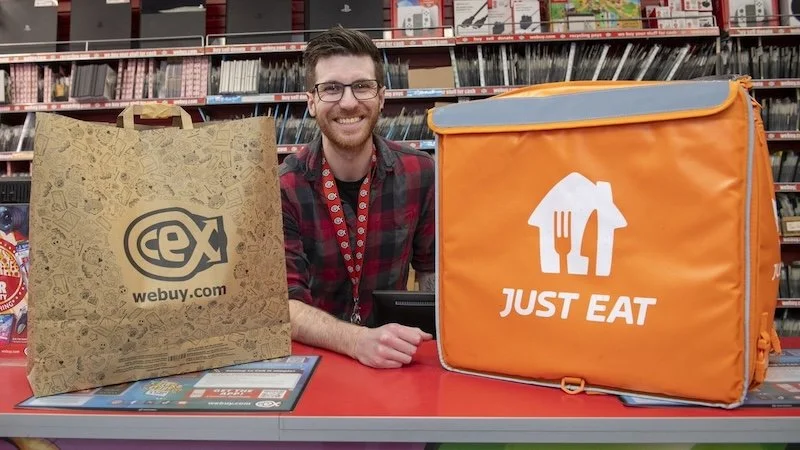Finding the balance between retail innovation and security in a digital technology centric world
Remember when shopping meant physically going to a store, browsing items on shelves and paying with cash or card at a register? Those days feel increasingly distant as retail undergoes a massive digital makeover.
Today's retailers are racing to adopt technologies that seemed like science fiction just a few years ago. Smart mirrors that let you virtually try on clothes. Cashierless stores where you grab items and walk out. Voice shopping that lets you order groceries while cooking dinner.
But this rush toward innovation comes with a catch: every new technology opens doors not just for customers, but potentially for fraudsters and security threats too.
When Innovation Meets Reality
"We were so excited about our new mobile checkout system that we pushed it live before fully testing the security," admits Jamie Chen, Digital Director at a national clothing retailer who prefers not to name the company. "Within three days, we discovered customers could accidentally access other people's purchase histories. Nothing catastrophic happened, but it was a wake-up call."
Jamie's experience isn't unique. According to retail technology consultancy ShopperTech, 68% of retailers have experienced at least one security incident related to new technology implementation in the past two years.
The numbers tell a compelling story:
Retailers will spend $30 billion on digital transformation in 2025
The average cost of a retail data breach now exceeds $3.8 million
43% of consumers have abandoned a retailer after hearing about a security incident
Innovation Spotlight: Smart Shelves
These IoT-enabled shelves can track inventory in real-time and change prices dynamically. Security consideration: Each shelf becomes a potential entry point to your network. Retailers must ensure these devices have proper encryption and regular security updates.
The Security Afterthought Problem
Why does security often take a backseat during innovation? The answer lies in how retail technology projects typically unfold.
"There's enormous pressure to launch quickly," explains retail consultant Sophia Washington. "Executives see competitors rolling out flashy new features and demand the same for their stores. When the race is on, security checks can feel like speed bumps."
This creates what security professionals call "technical debt" when companies implement quick solutions now that will require significant security fixes later.
Marcus Trent, CISO at HomeGoods Plus, puts it bluntly: "It's always more expensive to add security after the fact. It's like building a house without locks, moving in all your furniture and then trying to install a security system without disrupting your daily life."
Protecting Those Who Need It Most
Perhaps nowhere is the balance between innovation and security more critical than when it comes to protecting vulnerable consumers, particularly minors.
Online sales of age-restricted products have boomed, creating convenience for adults but potential risks for young people. Traditional age verification methods like entering a birth date or checking a box saying "I'm over 18" provide minimal protection.
This is where advanced identity verification solutions like GetID are making a difference. Their technology helps retailers verify customer ages without creating frustrating barriers to purchase.
"We implemented robust age verification for our online spirits store last year," says Retail Spirits Direct's e-commerce manager Alicia Gomez. "We were worried about losing customers to the extra step, but our conversion rate actually improved. Turns out customers appreciate knowing we take compliance seriously."
Expert View
"The retailers who will win in the digital age aren't necessarily those with the flashiest technology, but those who create experiences customers can trust. Security isn't just about preventing bad things, it's about enabling good things to happen with confidence."
– Dr. Leila Karimi, Consumer Psychology Researcher
Building a Better Approach
So how can retailers pursue innovation without leaving their digital doors unlocked? The answer lies in changing how technology projects are approached from the start.
Think Partners, Not Opponents
The most successful retailers are breaking down the traditional walls between innovation and security teams. Rather than security being the department that says "no," they're involved from day one in figuring out how to say "yes, safely."
"We completely changed our process last year," explains Target's VP of Digital Innovation, Marcus Williams. "Now our security team joins the very first brainstorming session for any new technology. They're not there to shoot down ideas but to help shape them in secure directions from the beginning."
Test With Real Humans
When luxury beauty retailer Sephora was developing its virtual try-on technology, they discovered an unexpected security gap during user testing.
"We had customers test the AR makeup application in our stores," recalls their digital product manager. "One teenager showed us how she could screenshot another customer's face from across the room and apply makeup to it without permission. We would never have caught that without real-world testing."
Security Checkpoint: Three Questions to Ask Before Launch
1. What's the worst thing someone could do with this technology if they were trying to misuse it?
2. What customer data is being collected and is all of it necessary?
3. How would we know if the system was compromised?
The Business Upside
Retailers who get this balance right aren't just avoiding problems, they're creating competitive advantages.
"We prominently feature our security measures in our marketing," says online electronics retailer CircuitDirect's CMO. "Our customer surveys show that 'trustworthy' is now the second most common word associated with our brand, up from not even making the top ten two years ago."
This trust translates directly to the bottom line. Retailers with strong security reputations see 23% higher customer retention rates and can command premium pricing in categories where trust matters most.
Looking Ahead
The retail innovation race won't be slowing down. If anything, technologies like ambient commerce (where purchases happen in the background without explicit checkout) and biometric payments will blur the lines between convenience and security even further.
The retailers who thrive won't be those who choose between innovation and security, but those who recognize that in today's market, you simply can't have one without the other.
As Home Depot's CTO recently put it: "We used to think of security as the brakes that slow down innovation. Now we think of it as the seatbelt that lets us drive faster safely."
For retail technology leaders, that mindset shift might be the most important innovation of all.































Continue reading…